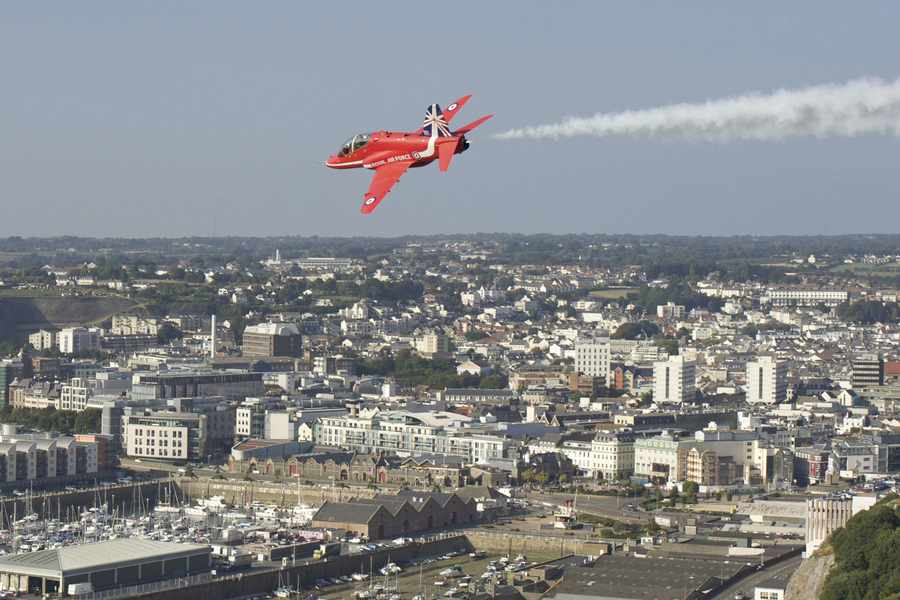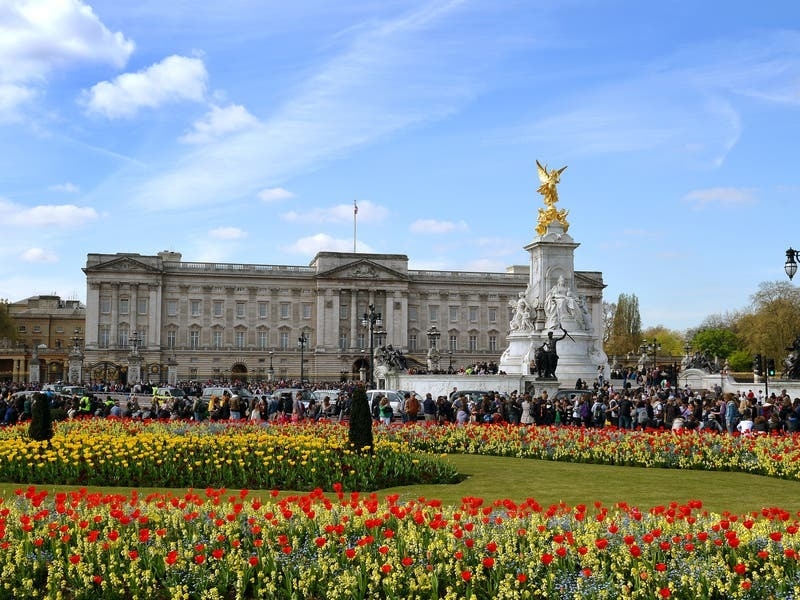The disaster has led the Civil Aviation Authority to impose restrictions on vintage aircraft, banning ‘high-energy aerobatics’ and limiting them to fly-pasts.
And the CAA says that it is due to carry out additional risk assessments on all forthcoming civil air displays following the incident, in which the jet – which performed at last year’s Jersey International Air Display – crashed into traffic on the A27 next to the showground.

Thankfully the few incidents to befall the Jersey show have been relatively minor:
- A Lockheed T33 en route to the Jersey International Air Display came down shortly after taking off from Duxford Aerodrome.
- A brake failure meant that a Red Arrow pilot came to a stop on a gravel mound after arriving at Jersey Airport in 2003. A spare plane was subsequently needed for the display.
- And one pilot received a telling off in the 1980s when he brought a wheel of his Cessna 150 down on to the roof of a parked car at La Haule Slipway.[/breakout]
Although some experts have said that the age of the plane, built in the 1950s, was not to blame for the crash, the accident does raise questions about just how long vintage aircraft should be used for public entertainment.
The planes, many dating back to the Second World War, are often flown to their very limits, performing stunts at high speeds and, to satisfy the crowds, at low altitudes.
In recent years there have been a number of fatal accidents at UK events, but the Shoreham crash is one of the worst at a British display for decades.
While the Jersey International Air Display has an excellent safety record, keeping the public and pilots safe is always the top priority, according to the event’s organiser, Deputy Mike Higgins.
The States Member, who has arranged the event for the past 18 years, said that one of the key decisions to help maintain safety was the introduction of a Flying Control Committee (FCC), who supervise the annual show.
The committee comprises Deputy Higgins, air display co-ordinator Darren Duprée, former RAF pilots Les Garside-Beattie and Mike Stanway, and air ambulance pilot Neil Airey.
Deputy Higgins said: ‘Every year I go to pre-season and post-season symposia where military pilots, civilian pilots and air show organisers attend to review and discuss things.
‘We look at accidents, among other things, so it’s fresh in everyone’s minds. We spend a great deal of time looking at safety.’

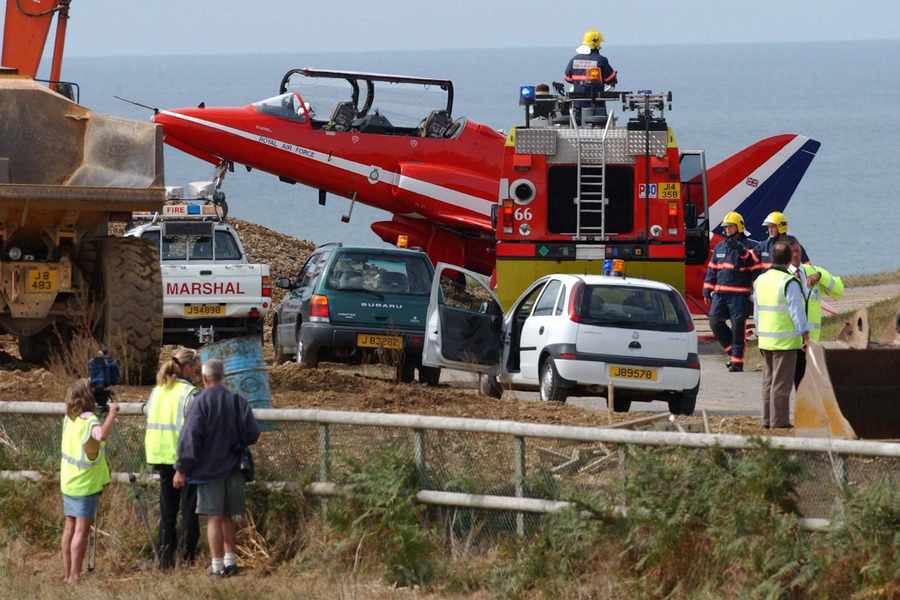
To hold an air display, Deputy Higgins explained, organisers need to apply to the Channel Islands Civil Aviation director, who considers the experience of applicants.
Permission is also needed from the Bailiff’s panel, who require a detailed report of what is planned.
Deputy Higgins added: ‘We also have a Flying Control Committee. These were in place at military bases hosting air shows, but were not required for civil air shows.
‘When I took over the show I went to an RAF course and got details about Flying Control Committees and set up an FCC for the Jersey International Air Display using experienced airmen.
‘The purpose of the committee is to make the show as safe as possible.
‘There’s also an unofficial network between air display organisers. So if somebody does something a bit stupid in a show, that may get passed on through the network.’
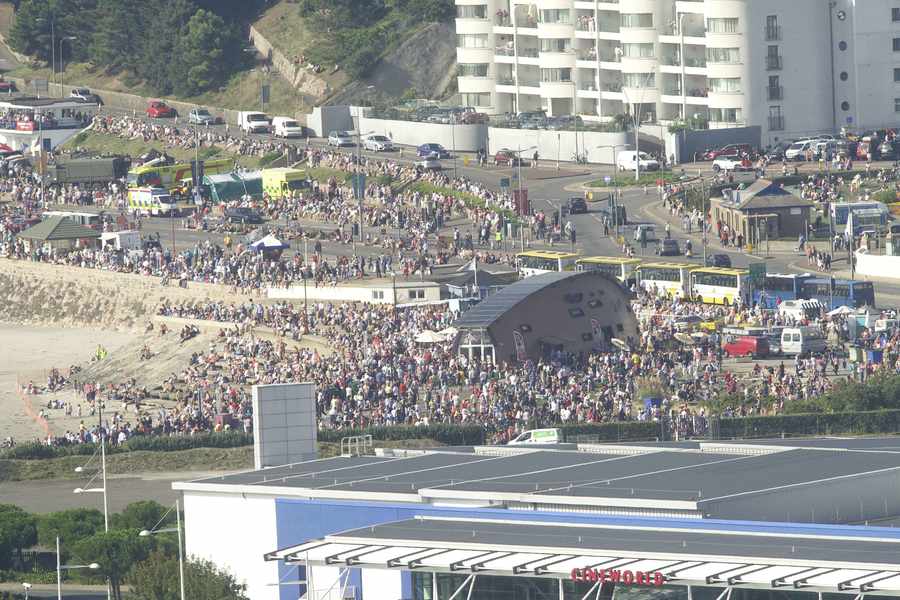
Among the procedures used by the FCC is the ability to issue a ‘red card’ to pilots in the air display, meaning they must land immediately.
Deputy Higgins said the group had only come close to giving such an order once, when bad weather affected the Red Arrows’ performance a few years ago.
Organisers also follow CAP 403 (Civil Aviation Publication 403), which sets out safety requirements, such as minimum height regualtions, for public air displays.
And in the run-up to a show there are extensive safety briefings to discuss accident response plans. These allow organisers to work with emergency services to determine what action will be taken in the event of a plane coming down in the sea, on the beach or further inland.
Safety briefings extend to the divers who wait aboard boats in St Aubin’s Bay, ready to mount a rescue. They are briefed about the procedures needed to rescue pilots from different aircraft.
Peter Paxton, a leisure pilot and former chairman of the Jersey Aero Club, said that audiences were increasingly looking for thrilling displays.
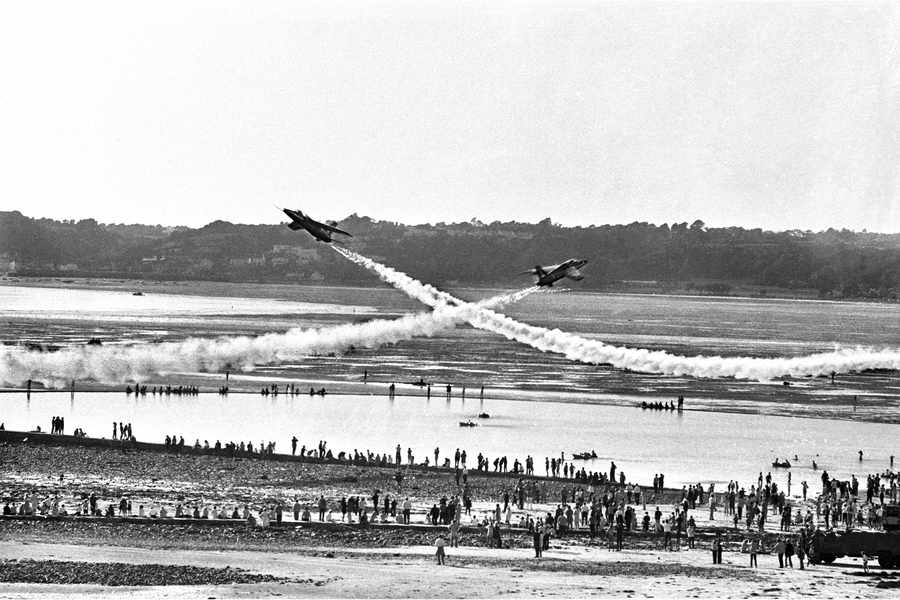
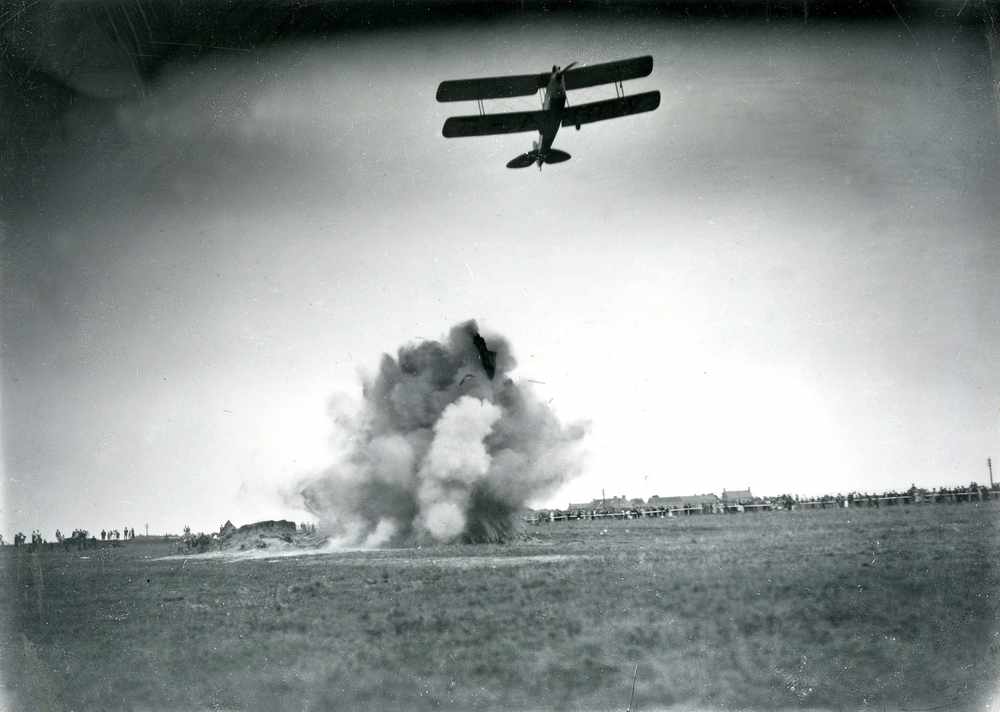
‘I think the problem is that the audience want very fast, very low, very noisy displays,’ he said. ‘For somebody to do aerobatics at 5,000 feet you could get the most spectacular sequence, but the public would say “forget it, we want to see someone flying along at X feet above the ground”.
‘The safety aspect is always prominent in everybody’s minds. There are regulations, but as a pilot you go further than that and impose your own safety checks. The biggest problem is bad weather and people flying beyond their capabilities.
‘Jersey’s air show has got a very good track record with safety.’
Jersey International Air Display incidents
AIR shows have been held in Jersey for more than 80 years, with the Island boasting an impressive safety record over that period.
In the early days of display flying, when few safety guidelines existed, hotshot pilots flew daring routines in a game of one-upmanship.
And in an attempt to thrill the crowds, Jersey’s first Air Pageant, held at Les Quennevais in September 1933, ended with a real-life bombing display in which a biplane blew up a hut as spectators watched from just feet away.
Low-flying stunts were also routinely performed over the heads of those who watched from St Aubin’s Bay.
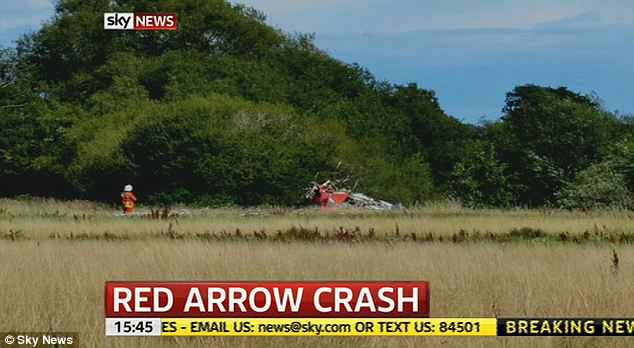
Earlier this summer RAF-trained pilot Kevin Whymanwas killed while performing an aerial display at a motoring festival in Cheshire. His Folland Gnat crashed after performing a low-level pass
Four years ago, the Red Arrows were rocked when pilot John Egging died after his Hawk T1 jet crashed during the Bournemouth Air Festival
In 2007 pilot and James Bond stuntman Brian Brown was killed when his Hawker Hurricane did not pull out of a dive during a staged dogfight at the Shoreham Air Show
Dozens of people died at the Ramstein Airshow in Germany in 1988. Three members of Italy’s Frecce Tricolori Air Force Display Team crashed in mid-air. All three pilots died and the flying wreckage killed 67 spectators and injured a further 346 people
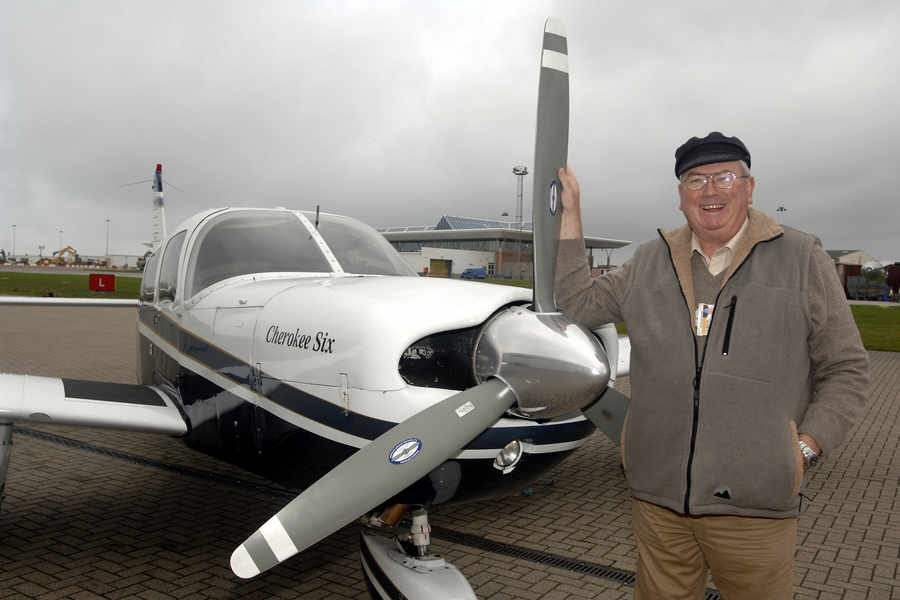
MR Willing, who yesterday celebrated his 72nd birthday, spent two decades flying at air shows, appearing for the last time two years ago.
He said that displays employed rigorous safety measures and that pilots always had safety at the front of their minds.
‘The first thing you do if you go in for air show flying is you present yourself to an examiner who is authorised by the CAA to examine you in all aspects of flying,’ he said. ‘So he watches you do your display, he questions you about the plane you’re in and makes sure the plane’s paperwork is all up to date. He looks at the whole operation. It’s really important to get across the safety aspect of it all.
‘Air display organisers are the same – they are constrained by the CAA regulations and have to get permission from them to run an air show. And they, too, are examined by the CAA, who go to different air shows throughout the year.
‘There’s a lot of control and it’s all about safety.

